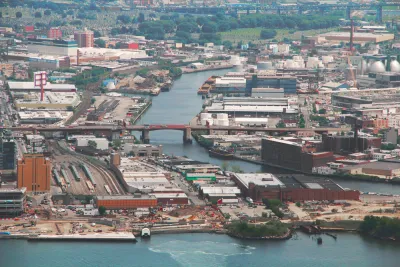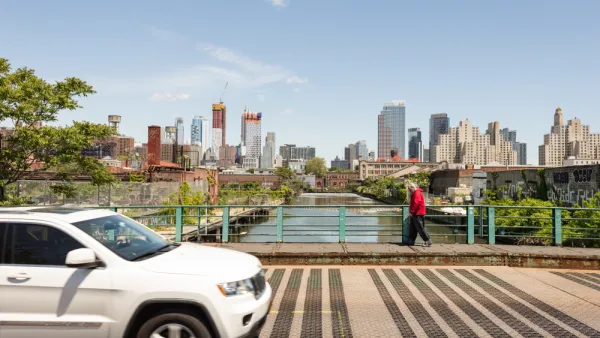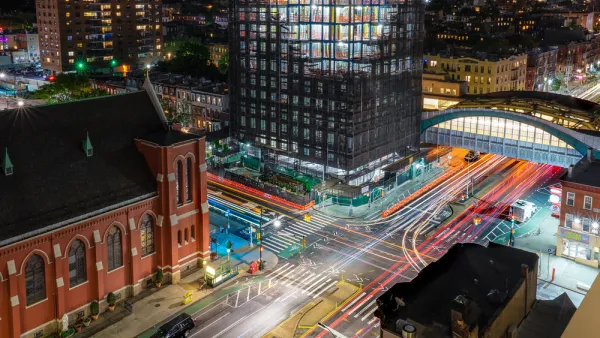A stinging critique of the public review process in New York City.

A recent critique of New York City's planning and development approvals processes, written by Justin Davidson, centers on Gowanus, Brooklyn, where a massive cleanup effort is now underway on the Gowanus Canal, along with a neighborhood rezoning study.
Both efforts have the potential to remake the neighborhood for a more equitable and salubrious quality of life for residents, according to Davidson, but the rezoning plan has fierce opponents, the cleanup will be subject to the fickle nature of federal bureaucracy, and the city's budget is "splintering" under the pressures of the pandemic.
"Those caveats shouldn’t be allowed to kill a good proposal or dampen its ambitions but rather prod the city to perfect it, and especially to demand the best design that New York’s architectural talent pool can offer," writes Davidson before expressing doubts about that potential outcome. "The rezoning may well get approved before de Blasio exits office just over a year from now, but to do so it will have to survive a planning system that has become unwieldy, unfair, and oriented toward mediocrity."
Gowanus is far from the only neighborhood cited in this article to describe the opposition forces to planning and development processes in New York City, as a defining characteristic of the newly progressive political climate, headlined by Rep. Alexandria Ocasio-Cortex, also includes fierce opposition to large-scale planning and development. "[C]aution has escalated to blanket hostility," writes Davidson.
"That urge to drive away private developers, and replace their clout and capital with public funds, is profoundly self-destructive, especially as the city’s budget withers before our eyes. Reflexive rejection is tragic because low-income areasneedrobust and thoughtful development," writes Davidson.
Key to the reality of the city's development opposition, Davidson argues, is the city's public review process: "The public-review process has a ritual, theatrical quality: months of persuasion, rejection, and mutual accusations of bad faith, frequently followed by a lawsuit. One side tries to eke out as many square feet out as possible, the other tries to knock the number down, or else extract concessions: a public plaza with benches, say, or some leftover space for a community center."
FULL STORY: New York’s Approval System for New Building Is a Recipe for Mediocrity

Analysis: Cybertruck Fatality Rate Far Exceeds That of Ford Pinto
The Tesla Cybertruck was recalled seven times last year.

National Parks Layoffs Will Cause Communities to Lose Billions
Thousands of essential park workers were laid off this week, just before the busy spring break season.

Retro-silient?: America’s First “Eco-burb,” The Woodlands Turns 50
A master-planned community north of Houston offers lessons on green infrastructure and resilient design, but falls short of its founder’s lofty affordability and walkability goals.

Test News Post 1
This is a summary

Analysis: Cybertruck Fatality Rate Far Exceeds That of Ford Pinto
The Tesla Cybertruck was recalled seven times last year.

Test News Headline 46
Test for the image on the front page.
Urban Design for Planners 1: Software Tools
This six-course series explores essential urban design concepts using open source software and equips planners with the tools they need to participate fully in the urban design process.
Planning for Universal Design
Learn the tools for implementing Universal Design in planning regulations.
EMC Planning Group, Inc.
Planetizen
Planetizen
Mpact (formerly Rail~Volution)
Great Falls Development Authority, Inc.
HUDs Office of Policy Development and Research
NYU Wagner Graduate School of Public Service



























